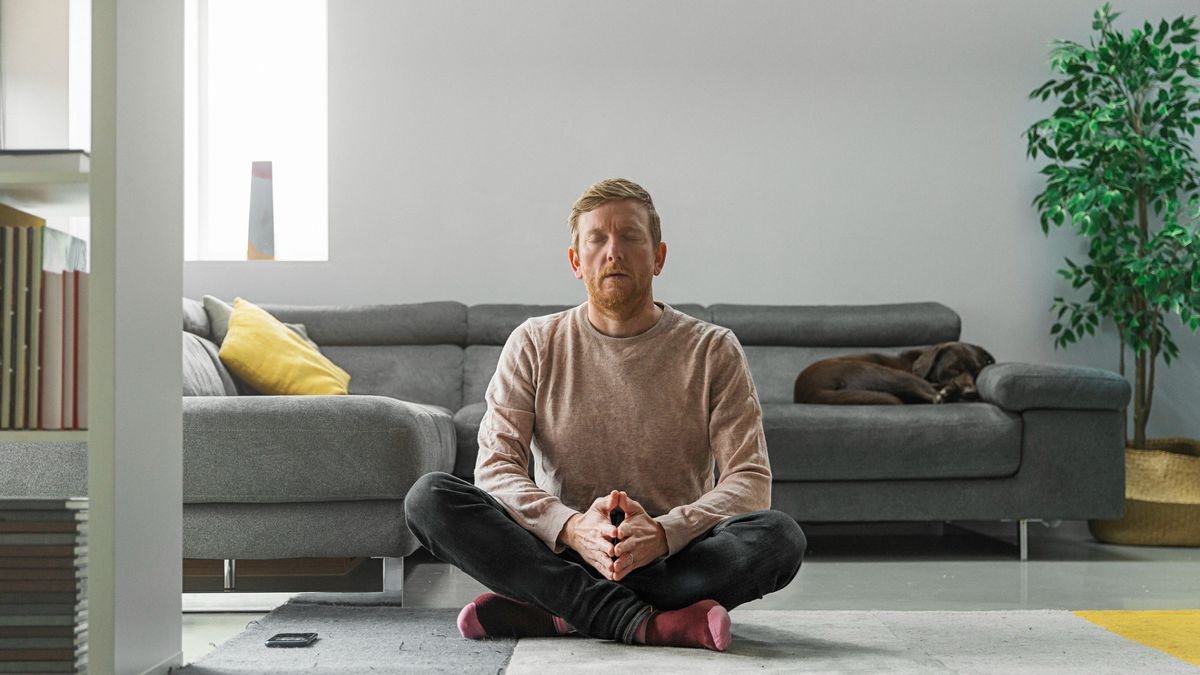My mind is not a calm and quiet place. From the moment I wake up until the moment I go to sleep, it’s working at breakneck speed, ticking off to-do lists and writing work emails.
I’ve always told myself that this is just the way my brain works, but after a few too many commitments in the run up to Christmas I was feeling a bit fatigued, so I decided to give meditation a try.
I’d always assumed meditation wasn’t for me, preferring to clear my mind through more intense exercise like CrossFit or running, but after a colleague spoke enthusiastically about the positive experiences she’d had with her meditation practice, I decided to give it a try.
How to meditate
My first step in starting to meditate was the same as many people around the world: I downloaded the Headspace app to learn how to meditate.
I watched an introductory video and then moved on to two meditations: an 11-minute guided meditation and a 10-minute breathwork session.
I didn’t expect it to be easy, but I was surprised at how much effort I put into the sessions. Here’s what I noticed after attempting meditation for the first time:
1. It didn’t come naturally
As soon as the meditation leader asked me to close my eyes, deadlines, dinner plans, and the clutter of my subconscious began to flood my mind.
I tried to concentrate on the voice coming from my phone but it was impossible, and I kept missing parts of the guided meditation because my brain was busy with other things.
According to Headspace, it’s common for beginners to experience restlessness and negative emotions, and these feelings need to be given careful attention and then let go.
“Over time, your mind learns to recognize these emotions, but gets used to not getting stuck in negative thought patterns — an extremely useful skill not only during meditation but in everyday life as well,” the Headspace website says.
By the end of the session, I think I was a little better at expressing my thoughts freely, but it felt like disappointing progress.
2. Breathing exercises have helped me feel more at ease
The meditation sessions were difficult and I didn’t feel any calming effect, but the breathing exercises were more effective. Having a focal point to focus on kept my brain busy and at the same time helped me feel more connected to my body.
The session revolved around a technique called “box breathing,” which involves breathing in, filling the lungs, holding the breath, then breathing out, emptying the lungs and being still.
I followed the app’s instructions to make sure each part of my breath lasted for about four seconds, and after three repetitions, I couldn’t believe how calm I felt.
When this habit stopped, it was as if a magician snapped his fingers and sent me back into the room.
3. The struggle of not making measurable progress
I’m naturally competitive, so when I take up a hobby, I like to keep track of my progress. This is one of the reasons I like setting fitness-focused goals. It’s easy to track improvements in the weight I lift or the speed I run.
Meditation is said to train the mind and improve focus, but there is no concrete way to measure this.
For this reason, I have found it difficult to engage with this practice, and I cannot see myself going back to anything that does not directly reward my efforts with tangible, substantial improvement.
Would I do it again?
Although meditation has many proven benefits, such as improving focus and lowering stress levels, meditation just isn’t for me.
Although I experienced some positive effects from the breathing exercises, the meditation class left me feeling worse than before I started.
So instead of opening the Headspace app the next day, I set my alarm for 6 a.m. and went to my usual CrossFit session, which was more effective at clearing my head.
What works for one person may not work for the next, so I would encourage others to try meditation, but for now I plan to stick with strength training and intense exercise classes.

